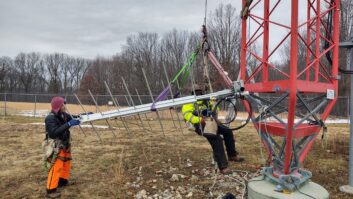It�s not uncommon these days to hear industry outsiders claim that music streaming services mark the beginning of the end for terrestrial radio. Yet Nielsen recentlyreportedthat Q2 of 2015 delivered the highest number of people tuning into radio ever, with 245 million people – that�s 91 percent of the American population � tuning in at least once a week.
While traditional radio is alive and well, broadcasters face a mounting challenge of staying relevant in an increasingly on-demand market where consumers expect greater control over and greater personalization of their content. �As daunting a task as this may seem, there are a number of actions traditional radio networks can take to ensure they not only keep pace with the quickly evolving market, but also thrive. Here are five examples that come to mind:
�
1. ON-DEMAND / SUBSCRIPTION
Across the board, live consumption of media is shifting to on-demand, self-curated experiences. According to theNieman Foundation, NPR�s on-demand listening now accounts for one-third of all digital listening hours, as users download 40 minutes of audio each month. NPR reports that their podcasts have almost doubled in total hours since a year ago.
Radio is powered by content, and users will increasingly expect the ability to consume this content on their terms. Although terrestrial broadcasters might fear a drop in Nielsen-rated listening as a result, on-demand listening actually provides powerful opportunities to ensure that listeners are spending more time with the primary brand, rather than chasing down similar content from podcasters or content aggregators.
�
Additionally, on-demand content can sit behind pay walls, allowing broadcasters to explore subscription opportunities. For example, a high profile morning program can offer free on-demand access to their daily shows while charging fees for access to archived content.
�
2. MAXIMIZATION OF EXISTING TALENT
One of terrestrial radio�s great strengths is their in-house, local talent. Personalities that are strong enough to dictate the daily listening habits of their fans are key to developing brand loyalty�which is becoming increasingly vital as radio battles for a user�s time with other platforms. With this in mind, it�s easy to wonder why broadcasters would limit these powerful, differentiating personalities to four or five hours of daily impact.
Digital versions of high-powered morning shows, for example, would allow radio stations to fully leverage their talent. Since most listeners do not have the chance to catch an entire four-hour show, an on-demand digital version would allow wide swathes of listeners to remain engaged with radio brands for longer periods of time.
�
3. MUSIC DISCOVERY
Terrestrial radio programmers now monitor their Nielsen ratings on a daily basis, forcing them to minimize hour-by-hour risks by opting to avoid unfamiliar material in favor of proven hits. As a result, terrestrial radio has become increasingly reluctant to break new music�and music fans have noticed. According to arecent studyby Edison Research, the Internet has supplanted radio as the source that Americans turn to first to discover new music.
Broadcasters can reclaim bragging rights to music discovery by creating highly curated new music elements on their websites and mobile apps. Rather than cannibalizing the primary brand, these mini-stations can serve as extensions for listeners who are most interested in hearing the latest releases. Such offerings can go far beyond mere playlists. Stations should use their DJ�s as hosts to introduce and contextualize new music and establish themselves as experts who truly care about music discovery.
�
4. TALENT DEVELOPMENT
Terrestrial radio has embraced syndicated talent as a cost-effective way to provide top-shelf programming. The resulting decrease in locally-produced content, however, has diminished radio�s ability to develop new talent. Where will radio�s next superstars hone their craft? Online, of course, whether via podcasts, YouTube, Vine and other destination sites that have yet to surface. To address this predicament, stations should use their own digital platforms to groom and introduce the next wave of on-air stars.
In order to avoid cannibalization of listening time, such content should be presented as short-form programs that point back to the primary radio brand. For example, emerging talent can host weekly countdowns, hour-long spotlights on local musicians, or online extensions of existing on-air features. In turn, such digital programming can be promoted on-air as brand-expanding features that introduce listeners to a radio station�s emerging �farm club� of talent.
�
5. SPONSOR EXTENSION
Radio sales executives are masters at injecting local sponsors into their content � so why is online content largely designed to be mere �added value� extensions of on-air buys? The development of the previously discussed robust on-demand content allows broadcasters to move away from simulcasted live streams in favor of highly curated, niche content that cannot be heard anywhere else. This supplementary content means additional sponsorship opportunities.
Streaming music services are here to stay and are rapidly changing how people consume the music, news, sports commentary and talk radio they love.Researchpredicts that mobile music-streaming audiences will grow from 320 million in 2014 to 808 million in 2021. So, the questioning of terrestrial radio�s future shouldn�t come as a surprise. After all, traditional cable networks are currently playing catch-up after failing to address the emergence of video streaming services, such as Hulu, Netflix and YouTube. However, radio doesn�t need to stumble down a similar path. In fact, radio has the ability to modernize and offer the digital experience that today�s listeners not only want, but also demand.�
�












